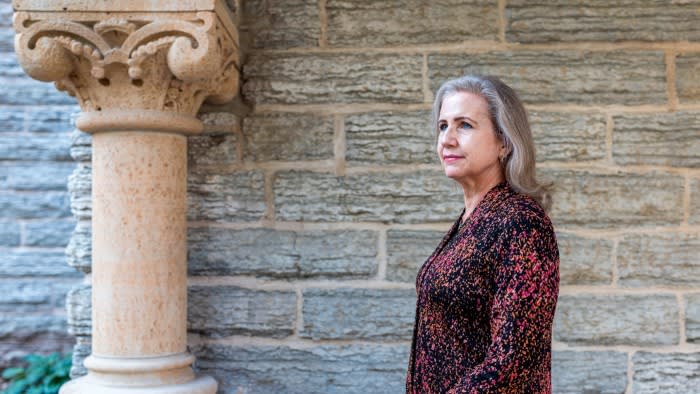Small US endowments and foundations are racing to outsource their investment management in the hopes of getting access to profitable but illiquid alternative markets amid growing funding challenges.
The funds collectively control trillions of dollars in assets but have struggled to generate consistent returns. The outsourcing boom has come as endowments and foundations increasingly rely on investment gains to meet funding needs, after other revenue sources became more volatile and operational costs jumped. It has coincided with a push into alternative asset classes such as private equity and venture capital in an effort to improve results.
While the embrace of an outsourced chief investment officer is aimed at improving performance, it has also reduced overhead costs in many instances — by eliminating the roles of in-house teams that used to do the job.
Multiple studies have found surging use of external managers by foundations and endowments. A study by the Commonfund and the Council on Foundations found 39 per cent of private foundations reported using an OCIO last year, up from 24 per cent in 2018. Another, by Captrust, an investment advisory firm in North Carolina, found the number which worked with an OCIO had doubled since 2020.
External investment managers, backed by leading Wall Street banks and consultancies, said they are in a better position to navigate private investments than many small funds that lack capacity and access.
But how much OCIOs benefit their clients remains unclear: they barely outperformed several popular investment benchmarks over the past decade.
“OCIO is not a panacea,” said Dennis Simmons, executive director of the Committee on Investment of Employee Benefit Assets, who had studied the practice. “It is not guaranteed to outperform an in-house team.”
By the end of June, Boston-based NEPC, an institutional investment consultancy, had managed $14bn for endowments and foundations as an OCIO. That was up 48 per cent from three years ago. “It is a part of the market that continues to grow materially,” said Scott Perry, head of portfolio strategy at NEPC.
US inflation-adjusted charitable donations fell 2.1 per cent last year following an 11 per cent slump in 2022, according to the Giving USA Foundation, thanks to surging inflation and pandemic-driven economic uncertainty that made Americans less generous.
A drop in college enrolment has imposed extra pressure on higher education as tuition income and government spending shrank. The problem is exacerbated by rising costs that caused “the power of each of your grant-making dollars to go down”, said Ned Rosenman, head of OCIO for endowments, foundations and family offices at BlackRock.
Mediocre investment performance has taken another toll on non-profit organisations. A study published this month by BlackRock shows US endowments with investable assets of between $251mn and $1bn have on average failed to generate the widely-accepted industry benchmark of 7.5 per cent annual return over the past 15 and 20 years.

Endowments and foundations “have really faced kind of a perfect storm in the past few years”, Rosenman said.
The solution, according to OCIOs, is to build up investment in alternative assets that boast a stronger return than public equities over time.
“There is a benefit of illiquidity premium that could be added to liquid investments,” said Bernard Reidy, national endowment and foundations executive at Bank of America, adding that returns on private markets could exceed public equities by 2 per cent to 3 per cent or more under leading managers.
The growing complexity of alternative investments, however, has created a high barrier to entry that small endowments and foundations struggle to overcome with their limited resources. That, said OCIO advocates, is where the model fits in.
Matt Bank, deputy chief investment officer of GEM, an OCIO in North Carolina that manages $12bn, said the company’s investment team of about 40 professionals focused on different segments of the public and private markets is a draw for clients.
“If you have a $500mn endowment, you simply cannot afford that level of team and staff,” Bank said. “It’s not cost effective.”
Many endowments and foundations are convinced. Patricia Langer, vice-president of administration and finance at Macalester College in Minnesota with a $902mn endowment, said it disbanded its internal investment team of four and started working with an OCIO last month in order to “gain access to higher earning (alternative asset) managers.” (The internal team was laid off).
“We reached a point where we needed to either invest in a bigger team, so that we could do more work to speak with more managers and knock on more doors, or consider the outsourcing option,” Langer said. “Our hope is that it’s easier to sustain a group of investment professionals in this OCIO model than it is to continue to expand and then continually refresh the existing staff.”
The use of OCIOs did pay off for some non-profit organisations. Stuart Comstock-Gay, president of the Delaware Community Foundation with $350mn investable assets, said he was “extremely happy” with what the OCIO his organisation hired seven years ago had achieved by investing in alternative assets ranging from commodities to real estate.
The foundation was “much more erratic in our returns” when it only held stocks and bonds, Comstock-Gay said. Now, its results are on par with peers, and sometimes even better, he added.
While some endowments and foundations have benefited from outsourcing their investment functions, others are waiting to see when and if the initiative bears fruit.
An OCIO performance index compiled by consultancy Alpha Capital Management shows the endowment and foundation sub index underperformed the S&P 500 index and a standard investment portfolio mix of 60 per cent US stocks and 40 per cent bonds in the decade through June this year.
“To say that OCIO is always more cost effective is just not right,” Simmons said.
https://www.ft.com/content/9b02927b-ff5f-4d33-8059-eb0d87eaed7a


